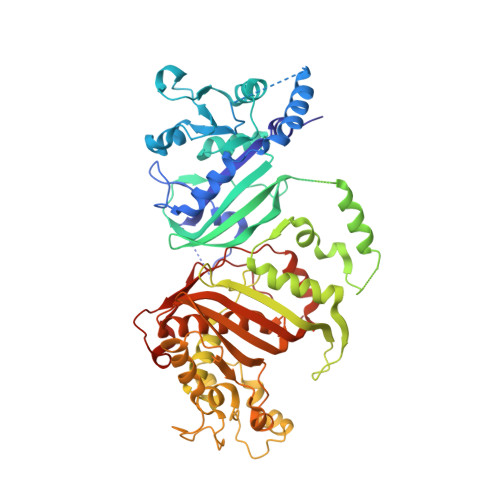Discovery of rigid biphenyl Plasmodium falciparum DHFR inhibitors using a fragment linking strategy.
Hoarau, M., Sermmai, P., Varatthan, T., Thiabma, R., Jantra, T., Rattanajak, R., Vitsupakorn, D., Vanichtanankul, J., Saepua, S., Yuthavong, Y., Thongpanchang, C., Kamchonwongpaisan, S.(2023) RSC Med Chem 14: 1755-1766
- PubMed: 37731689
- DOI: https://doi.org/10.1039/d3md00242j
- Primary Citation of Related Structures:
8JFB, 8JFC, 8JFD - PubMed Abstract:
Plasmodium falciparum dihydrofolate reductase ( Pf DHFR), a historical target for antimalarials, has been considered compromised due to resistance inducing mutations caused by pyrimethamine ( PYR ) overexposure. The clinical candidate P218 has demonstrated that inhibitors could efficiently target both PYR -sensitive and PYR -resistant parasites through careful drug design. Yet, P218 clinical development has been limited by its pharmacokinetic profile, incompatible with single dose regimen. Herein, we report the design of new Pf DHFR inhibitors using fragment-based design, aiming at improved lipophilicity and overall drug-like properties. Fragment-based screening identified hits binding in the pABA site of the enzyme. Using structure-guided design, hits were elaborated into leads by fragment linking with 2,4-diaminopyrimidine. Resulting compounds display nM range inhibition of both drug-sensitive and resistant Pf DHFR, high selectivity against the human isoform, drug-like lipophilicity and metabolic stability. Compound 4 and its ester derivative 3 kill blood stage TM4/8.2 parasite at nM concentrations while showing no toxicity against Vero cells.
Organizational Affiliation:
National Center for Genetic Engineering and Biotechnology (BIOTEC), National Science and Technology Development Agency Pathum Thani 12120 Thailand [email protected].


















